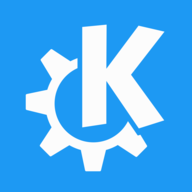

I think “identities” used on Gemini (at least the way they are implemented in Lagrange browser) are the best implementation of a similar idea, but, you know, it’s only supported in Gemini.


I think “identities” used on Gemini (at least the way they are implemented in Lagrange browser) are the best implementation of a similar idea, but, you know, it’s only supported in Gemini.
So pretty much same as ssh/gpg private/public keys? Do many websites support this? I don’t remember seeing any that would give me an option to register using passkeys. Also, where are the private keys stored? How do I move them from device to device (for example, I signed up on android and now want to log in on desktop)? Do I back them up and restore when I’m buying a new phone?
Sorry for being silly here, I’ve been kind of out of the loop with recent technology, what exactly is “passkeys”? I remember reading something when it was announcement, but all I saw was lots of buzzwords and vague “it’s new and it’s very good” claims.
Is it like, an alternative authorization method? Is it a second factor after I type my login/password, or does it replace passwords? What does it look like, from users perspective?
the idea of being a true second brain
It’s good that it’s built with this idea, but what is the actual implementation of this idea? What features make it «a true second brain» that other «second brain» apps (obsidian and hundred other note taking apps) don’t have?
I never encountered jxl in the wild so I don’t know which apps support it, but if somehow you found a jxl file and don’t know how to view it, this one works:
https://apt.izzysoft.de/fdroid/index/apk/fr.oupson.jxlviewer


I really liked T9 keyboard, until I tried to type stuff like URLs, emails, passwords etc.


Thank god we have people like you. Please never stop telling people it’s ok to use this word.
Is there non “appimage” linux release?
I comment the commands that I want and then use vim to remove ones without comments.
For example, I run:
longandannoyingcommand -f1 -f2 -f3 # keep, does something useful
Usually comment explains what the command does so I can find it by description using fzf history search.
And then you can easily find all lines that contain (or do not contain “# keep”) in your history to remove or keep.
Arch users switching back to Arch after 10 minutes of using Ubuntu:
Yes. You choose the compose key in your DE settings (usually right alt key), then you can press it and type compose sequences to insert unusual symbols or strings.
Thank you very much!
Looks like the site is down or blocked in my country.
Could anyone please be so nice and copy paste those commands here?


Great release.
However I’m still waiting for snapping/alignment/distribution to be usable. Right now, some things override others (even when holding a modifier to constrain node to an axis, it will snap to things that are not aligned with the axis), and because of visual vs geometric bounding box when resizing things it will snap to align with other shapes but when you let go of LMB, the object won’t be aligned anyway (so what was the point of snapping in the first place).
Also sometimes things will snap to a guideline from a mile away, when things I’m trying to move are nowhere close to a guideline.
I’m coming drom other software (specifically, Corel Draw) and understand it’s not fair to compare different tools and demand from one to mimic the other, especially when Inkscape is FOSS and Corel Draw is a commercial product made by paid developers. And you could also say most of things I’m complaining about are muscle memory things because I’ve been using Corel for years and need to let go of old habits and get used to Inkscape if I want to switch to it rather than demand Inkscape to be more Corel like.
But I still believe Corel does some things just right. I pretty much never needed to turn off snapping in Corel and “it just worked”™, objects would never snap to a guide on the other side of the screen and constrained nodes (when holding Shift) would still both be constrained to axis and snap to objects, meaning it snaps on the intersection of the other object and the axis I’m moving along.
Also if I’m resizing a box and the edge snaps to a guide, when I let go, in Corel the edge of the box will 100% be aligned with the guide, unlike in Inkscape.
I’m pretty sure some of these issues are because of Geometric vs Visual bounding box differences, and it’s good we can at least choose between the two: Corel can’t even deal with visual bounding boxes IIRC. You work with geometric bounding box only.
I think adding the toggle somewhere in the toolbar would be a great thing so that we don’t have to go into the menu and find it every time, maybe even a hotkey to toggle between the two.


Is this yet another Conversations for?


Yeah, both steam and discord do this and it’s stupid.
Sorry, can’t help you, but I’m sure the other comment already gave you a working solution.
Can you press “custom” and enter 0?
Sorry I’m not a dev and can’t answer your questions, just got curious: you’re asking how things like autocompletion would work with Raylib. What’s Raylib, and why would it need something special and not work the same way everything else works?
I don’t do development but I still like coding in Python and like to know about development.
No, and I miss it. Space sniffer was so good.
May I ask you what problem you’re trying to solve, what’s the use case, or what’s the workflow you’re aiming for? Why not just open a notepad window? I’m sure someone will give you good advice, but more info would be helpful.